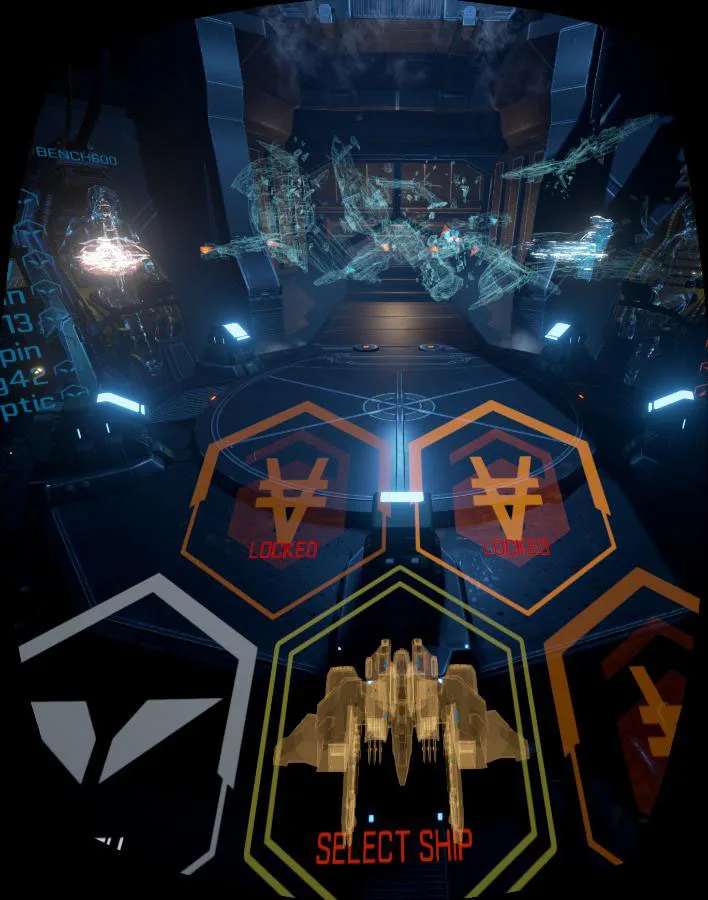Less than two weeks ago, AMD released its new $699 RX Vega 64 liquid-cooled video card which basically trades blows with the $499 GTX 1080, but completely failed to take the performance crown from NVIDIA’s $699 GTX 1080 Ti in our benchmark suite of 27 modern PC games. Since the RX Vega 64 is advertised for a “premium” VR experience, we are following up with a ten VR game performance comparison measuring frametimes and unconstrained performance with FCAT VR.
We have been playing more than 30 VR Oculus Rift games using 4 top NVIDIA and 3 top AMD video cards this year including the RX Vega 64. Since we posted our original evaluation in January, we have benchmarked 6 VR games in our follow-up using FCAT VR and then 3 more games. We have favorably compared FCAT VR with our own video benchmarks which use a camera to capture images directly from a Rift HMD lens. For BTR’s VR testing methodology, please refer to this evaluation.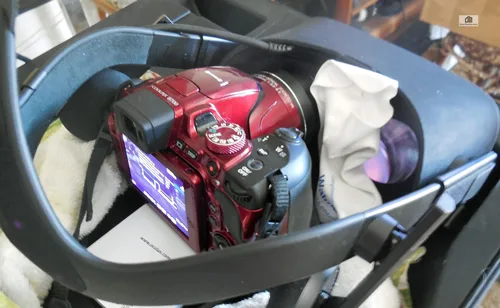
We are going to test 10 Oculus Rift VR games using the GTX 1080 Ti FE, the GTX 1080 FE, and a Gigabyte RX Vega 64 liquid cooled edition on a Core i7-6700K at 4.0GHz where all 4 cores turbo to 4.6GHz, an ASRock Z170 motherboard and 16GB of Kingston HyperX DDR4 at 3333MHz on Windows 10 64-bit Home Edition. Here are the ten VR games we are benchmarking:
- Alice VR
- Batman VR
- Chronos
- DiRT: Rally
- EVE: Valkyrie
- Obduction
- Robinson: The Journey
- Robo Recall
- Serious Sam: The Last Hope
- The Unspoken
Until FCAT VR was released in March, there was no universally acknowledged way to accurately benchmark the Oculus Rift as there are no SDK logging tools available. To compound the difficulties of benchmarking the Rift, there are additional complexities because of the way it uses a type of frame reprojection called asynchronous space warp (ASW) to keep framerates steady at either 90 FPS or at 45 FPS. It is important to be aware of VR performance since poorly delivered frames will actually make a VR experience quite unpleasant and the user can even become VR sick.
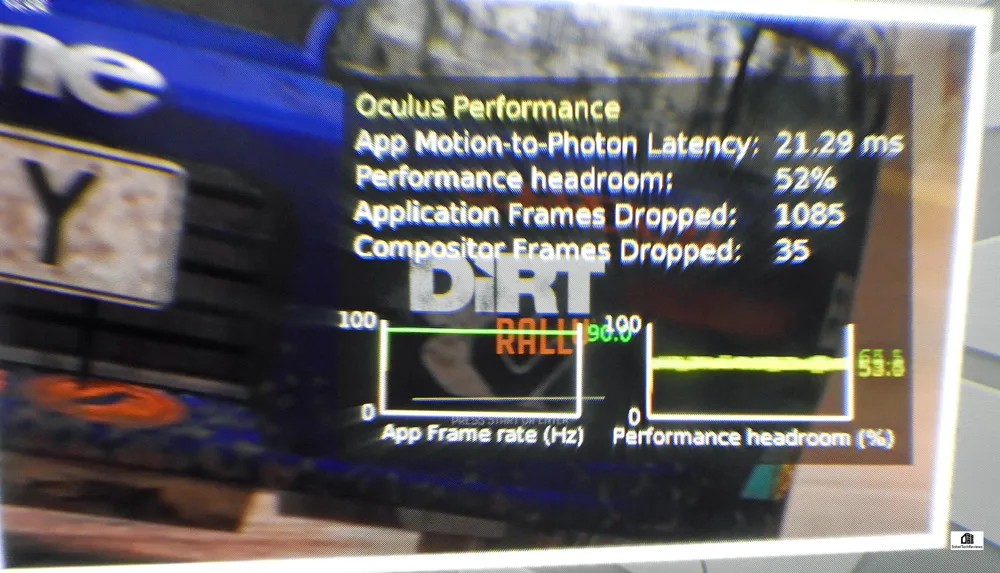
It is very important to understand how NVIDIA’s VRWorks and AMD’s LiquidVR each work to deliver a premium VR experience, and it is also important to understand how we can accurately benchmark VR as explained here. And before we benchmark our 10 VR games, let’s take a look at our Test Configuration on the next page.
Test Configuration – Hardware
- Intel Core i7-6700K (reference 4.0GHz, HyperThreading and Turbo boost is on to 4.6GHz; DX11 CPU graphics)
- ASRock Z170M OC Formula motherboard (Intel Z170 chipset, latest BIOS, PCIe 3.0/3.1 specification, CrossFire/SLI 8x+8x)
- HyperX 16GB DDR4 (2x8GB, dual channel at 3333MHz), supplied by Kingston
- Oculus Rift including Touch Controllers.
- GTX 1080 Ti, reference clocks, supplied by NVIDIA
- GTX 1080, 8GB, Founders Edition, reference clocks, supplied by NVIDIA
- Gigabyte RX Vega 64 Liquid Cooled Edition
- Two 2TB Toshiba 7200 rpm HDDs for each platform
- EVGA 1000G 1000W power supply unit
- EVGA CLC 280 – 280mm CPU watercooler, supplied by EVGA
- Onboard Realtek Audio
- Genius SP-D150 speakers, supplied by Genius
- Thermaltake Overseer RX-I full tower case, supplied by Thermaltake
- ASUS 12X Blu-ray writer
- Monoprice Crystal Pro 4K display
- ACER Predator X34, GSYNC display, supplied by NVIDIA/ACER
- Nikon B700 digital camera
Test Configuration – Software
- NVIDIA’s GeForce WHQL 385.41. High Quality, prefer maximum performance, single display.
- AMD Crimson Software ReLive 17.8.2 beta
- VSync/GSYNC are off in the control panel.
- FCAT VR benchmarking tools
- Oculus Rift Diagnostic tools
- Highest quality sound (stereo) used in all games.
- Windows 10 64-bit Home edition, all VR hardware was run under Oculus Rift software. Latest DirectX
- All applications are patched to their latest versions at time of publication.
- WattMan was used for AMD cards.
- MSI’s Afterburner, latest beta, was used for NVIDIA cards.
VR Games & Apps
- Alice VR
- Batman VR
- Chronos
- DiRT: Rally
- EVE: Valkyrie
- Obduction
- Robinson: The Journey
- Robo Recall
- Serious Sam: The Last Hope
- The Unspoken
NVIDIA Control Panel settings
(UPDATED 08/28/17) We used MSI’s Afterburner to set the Power and temp limits to their maximums.
AMD ReLive Radeon Settings
Here are the Global setting that we use in the Radeon Control Panel for the RX Vega 64: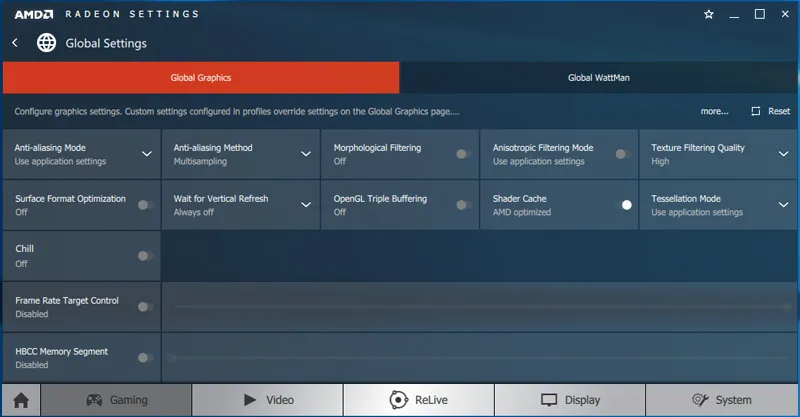
Power Limit/Temperature/Fan targets are set to automatic maximum by WattMan. 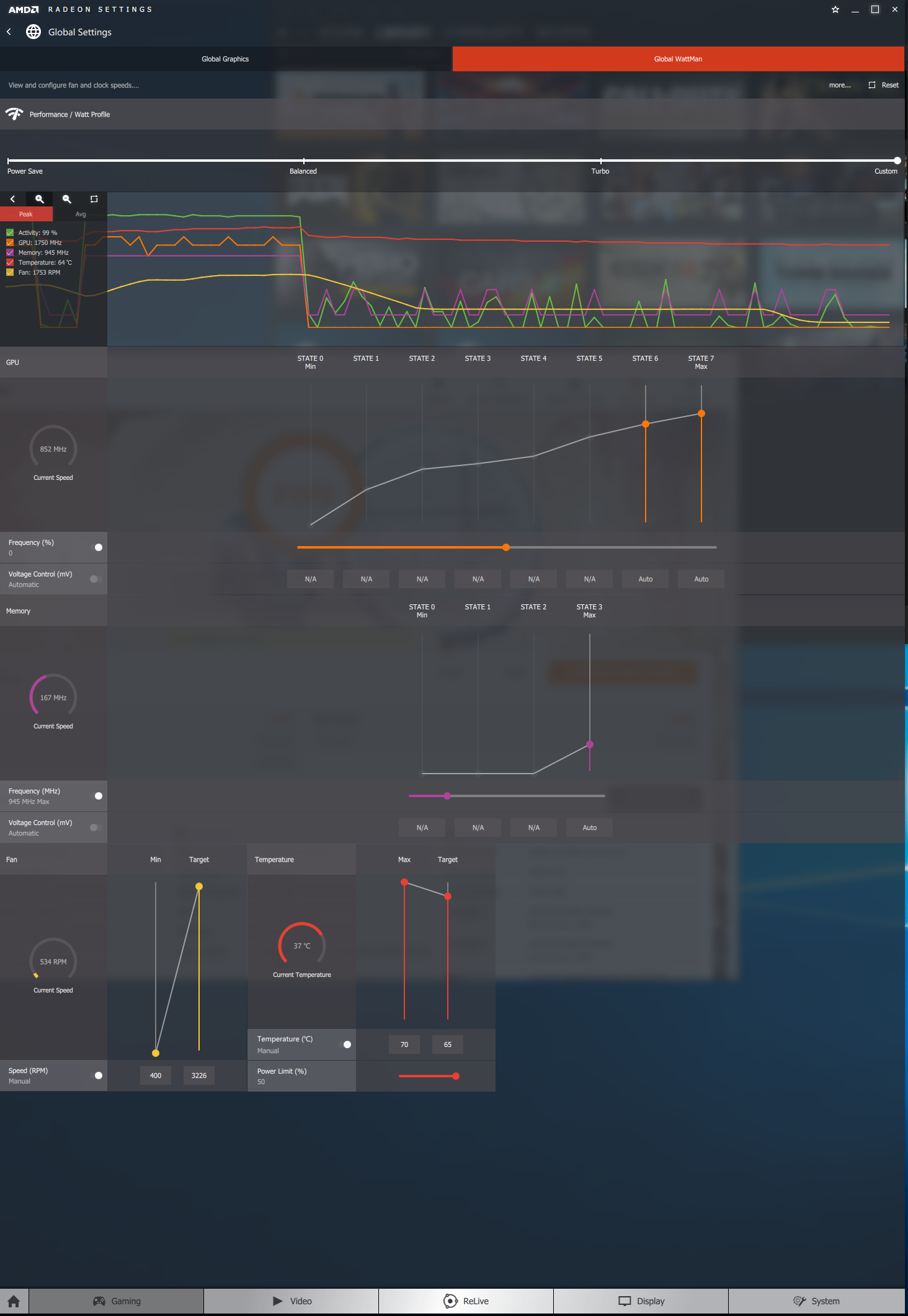
Let’s individually look at the games that we benchmark starting with Alice VR, Batman VR, and Chronos.
Alice VR
Alice VR is a science fiction space adventure game that is very loosely based on Lewis Carroll’s “Alice in Wonderland”. You are awakened from cryo-sleep and directed by your ship’s AI to fix some malfunctions that require going to a nearby planet’s surface to acquire supplies. It’s a short game of perhaps 5 or 6 hours that has simple puzzles, and it might be worth playing except for the awful way that locomotion is implemented.
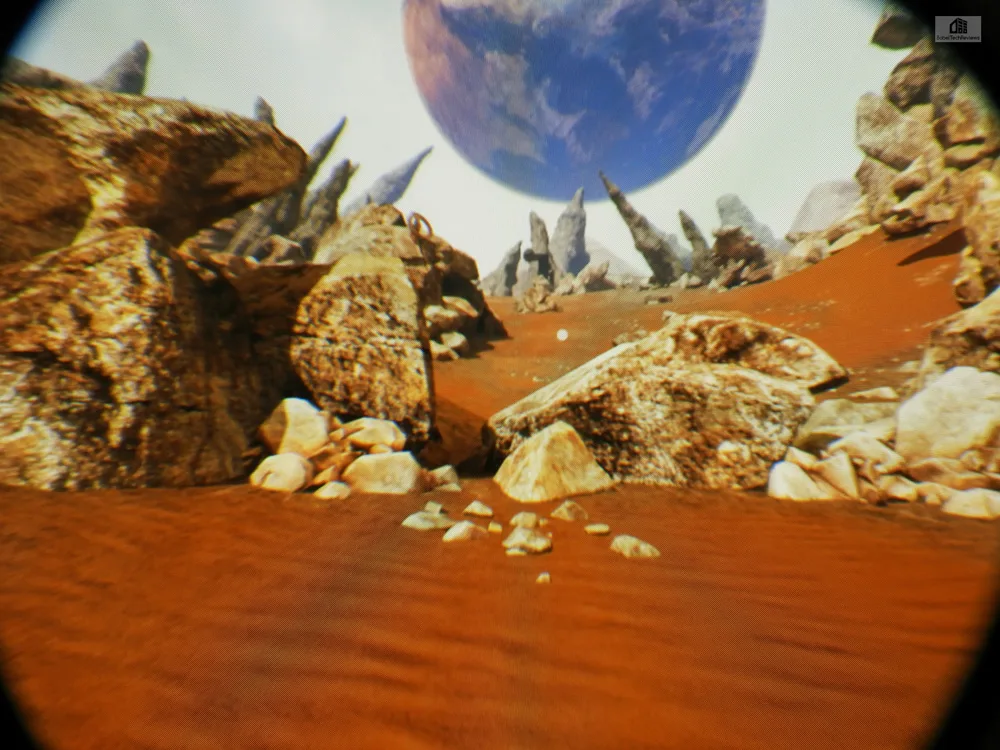
Although Alice VR uses the Unreal 4 engine, the outdoor graphics are weak and the interactivity is poor. Even when you get to drive a vehicle on a planet’s surface, the ground is mostly flat and the rocks you drive over only occasionally cause you to feel like you are really driving. The indoor environments are considerably better but the game is at best, average.
Here is the FCAT generated chart for Alice VR with all graphics settings set to their highest.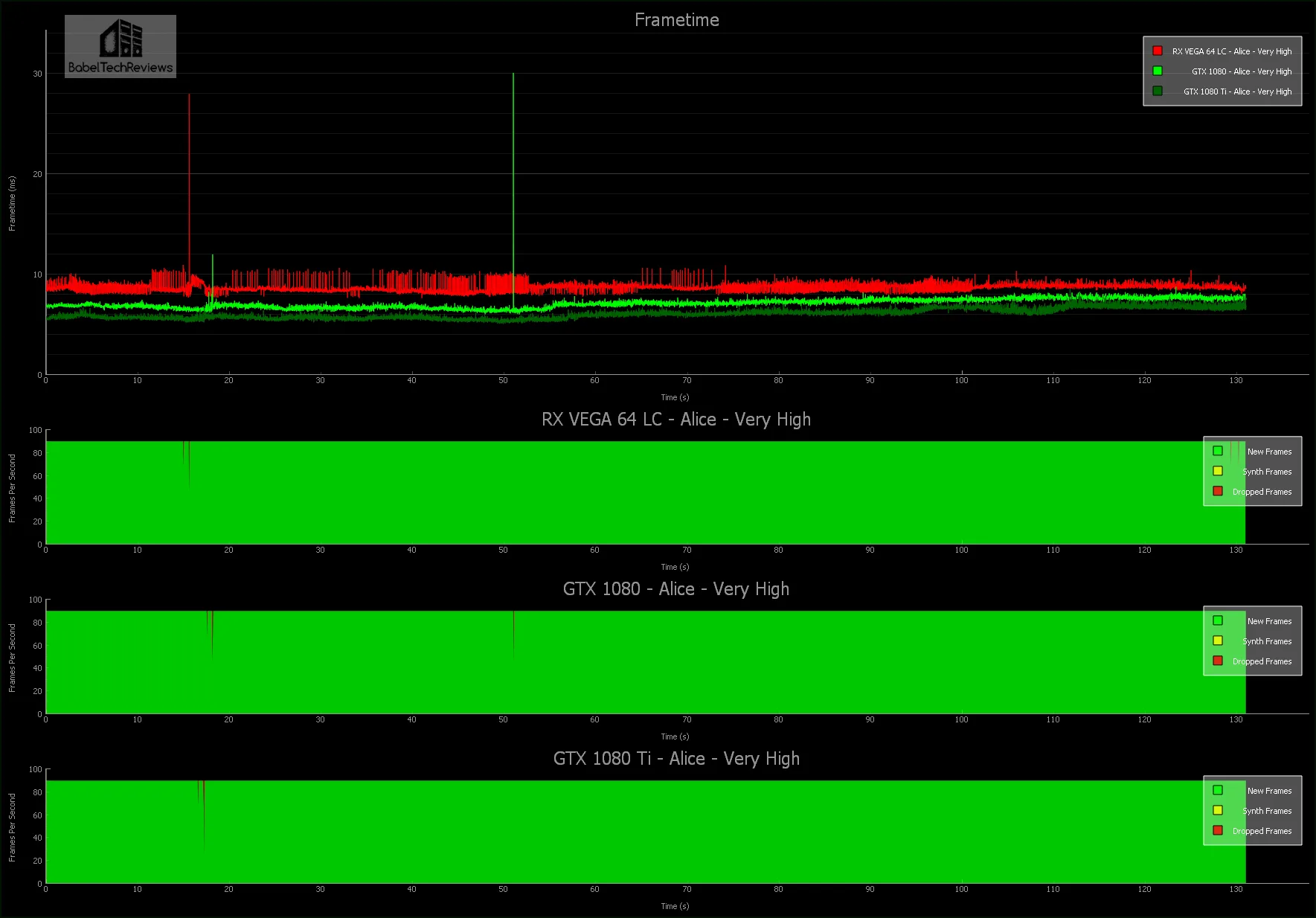
The 1080 Ti easily averaged 172.9 unconstrained FPS while the GTX 1080 produced an average of 141.7 unconstrained FPS, and the RX Vega 64 averaged 115.7 unconstrained FPS.
It’s pretty clear that Alice VR is not demanding at all. All of the video cards that we tested are able to deliver at least 90 FPS with only occasionally dropping into an rare frame reprojection and an occasional dropped frame. Let’s look at Batman VR next.
Batman Arkham VR
Batman Arkham VR is an unusual game that immerses you into Batman’s world but doesn’t really involve fighting. It is a beautiful-looking game with a lot of interactivity and an emphasis on “detective work” and puzzle solving. It’s short, but it really shows one what VR is capable of right now on the Unreal Engine.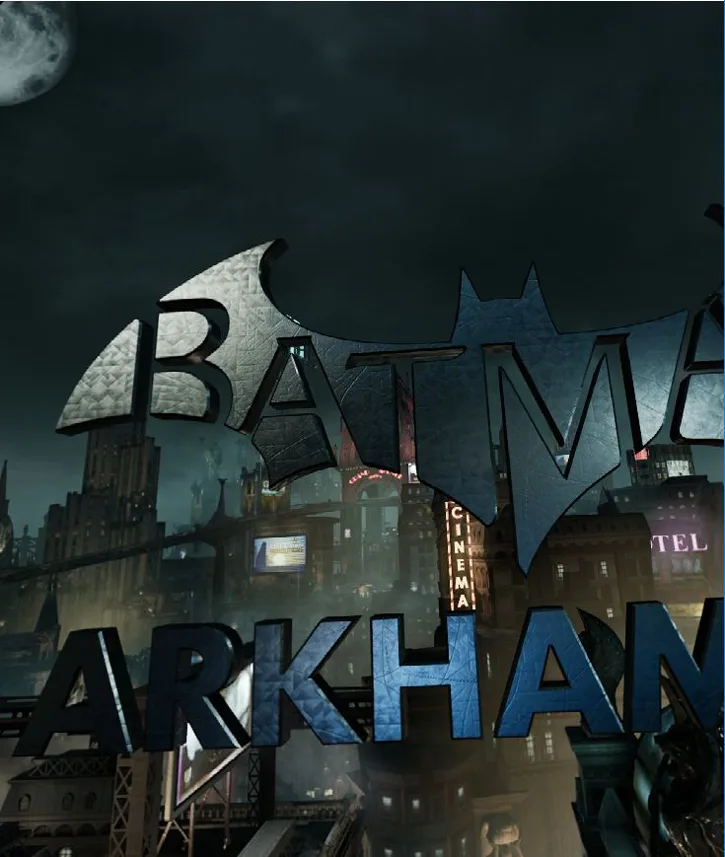
Batman Arkham VR has multiple settings but we benchmark at the stock full resolution, 100% pixel density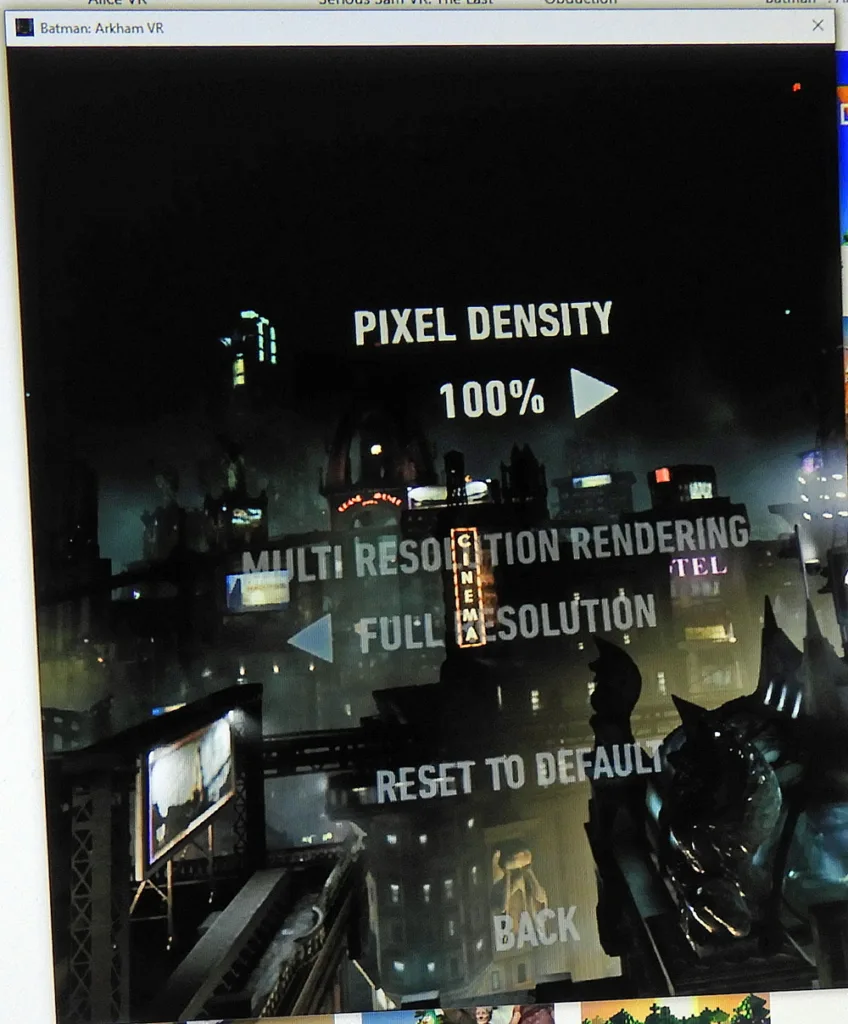
Here is the performance across our 3 cards from the FCAT generated charts at 100% Pixel Density.  The frames are generally delivered well with the exception of a couple of RX Vega 64 stutters. All three of our test cards can play at the highest settings, but even with 100% pixel density, the scenes are slightly blurred and there is a minor screendoor effect visible. The holy grail of VR image quality (IQ) would be to increase the Pixel Density since the RX Vega 64 can deliver 115.7 unconstrained FPS while the GTX 1080 delivers 141.7 FPS and the GTX 1080 Ti delivers 178 unconstrained FPS .
The frames are generally delivered well with the exception of a couple of RX Vega 64 stutters. All three of our test cards can play at the highest settings, but even with 100% pixel density, the scenes are slightly blurred and there is a minor screendoor effect visible. The holy grail of VR image quality (IQ) would be to increase the Pixel Density since the RX Vega 64 can deliver 115.7 unconstrained FPS while the GTX 1080 delivers 141.7 FPS and the GTX 1080 Ti delivers 178 unconstrained FPS .
Let’s look at Chronos next
Chronos
Chronos is an exclusive Rift launch title with graphics options that are good for GPU testing. It is an amazing RPG for the Rift and also very hard. It is about 15 hours long and has many puzzles to solve as well as requires a player to be very good in combat especially with defense and attack timing. It uses the Xbox One controller although the Touch controllers can also be used, and since it has a 3rd person view, there is little chance of getting VR sick unless you really push the settings too high. Chronos is an excellent VR game.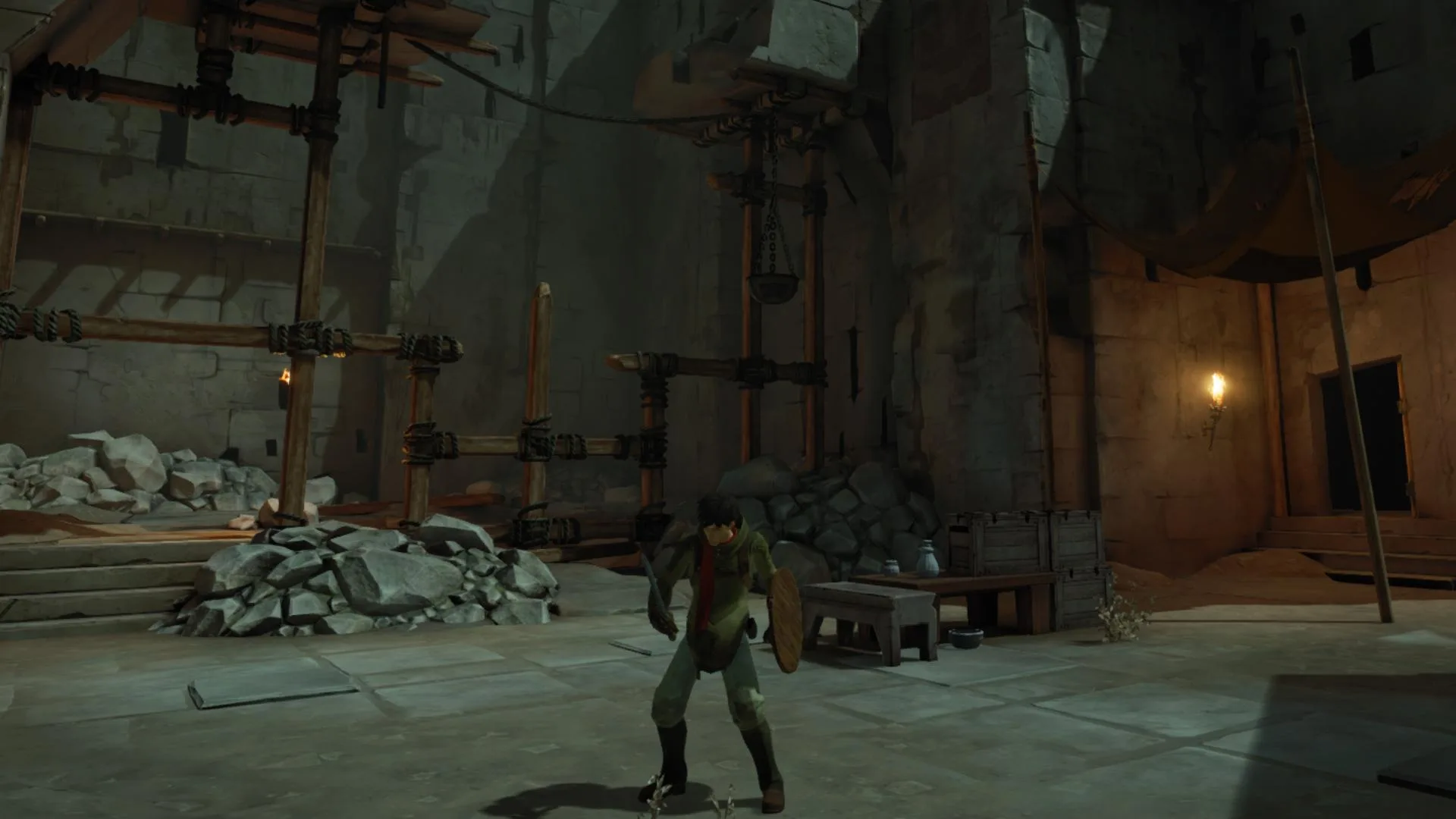
There are 4 settings and we picked Epic.
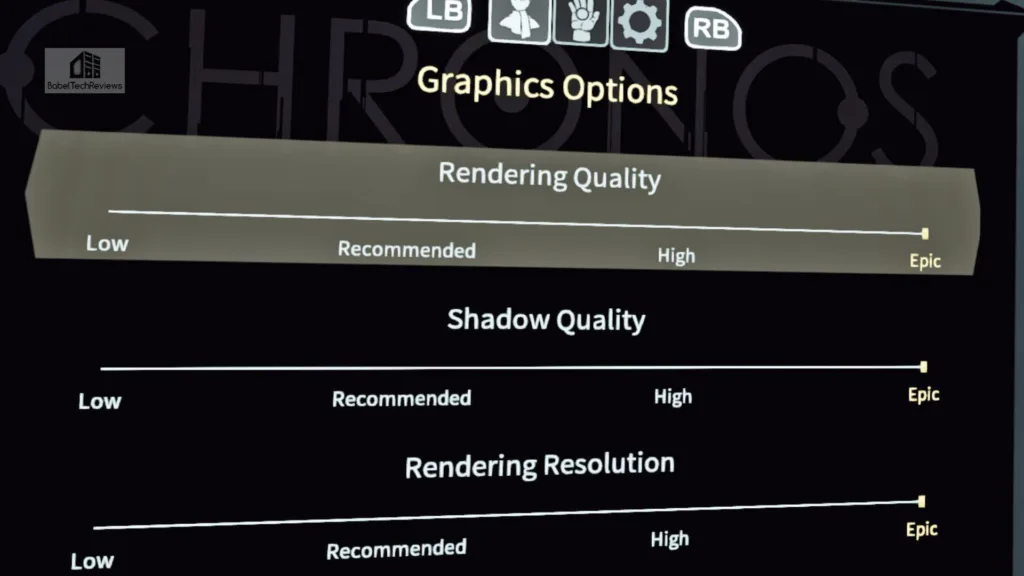
Here are the FCAT generated charts of Chronos with Epic settings: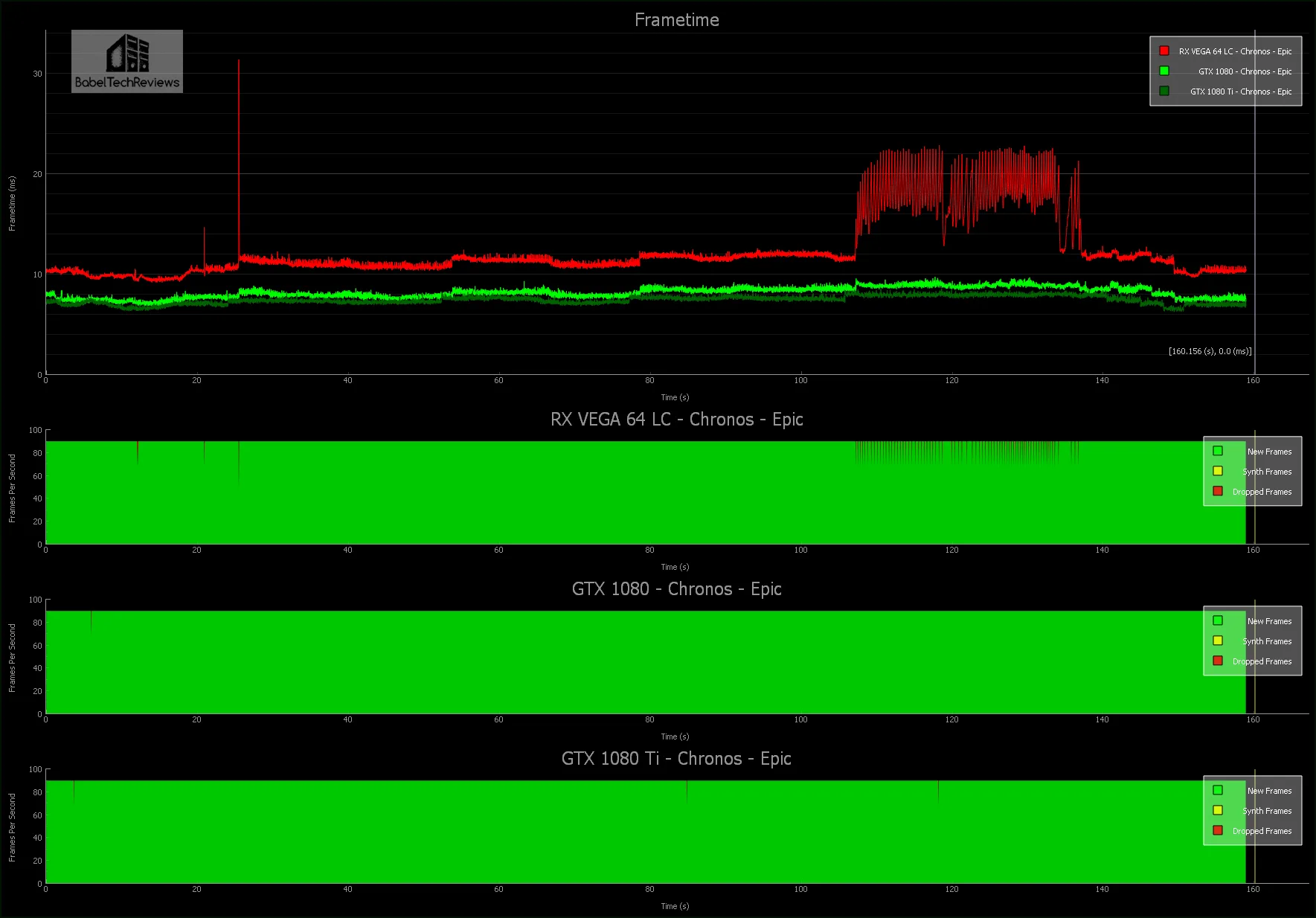
The GTX 1080 Ti and the GTX 1080 can both play Chronos on Epic without needing to drop to 45 FPS with ASW reprojection like the RX Vega 64 needs to. When you are fighting, you really want 90 FPS without any ASW or you may encounter some artifacting. However, the RX Vega cannot play on Epic very well for any length of time as many of the frames are ASW simulated. We’d recommend dropping settings to High for RX Vega until AMD improves the drivers.
The 1080 Ti averaged 135.2 unconstrained FPS while the GTX 1080 produced an average of 123.1 unconstrained FPS, and the RX Vega 64 averaged 81.6 unconstrained FPS which is below the ideal 90 FPS and will cause reprojection.
Let’s check out DiRT: Rally, EVE: Valkyrie, and Obduction next.
DiRT: Rally
DiRT Rally has a built-in benchmark that is 100% repeatable. If a framerate drops below 90 FPS, the Test Summary of the built-in benchmark accurately shows the minimum as 45 FPS (with ASW reprojection). Unfortunately, it does not display unconstrained FPS.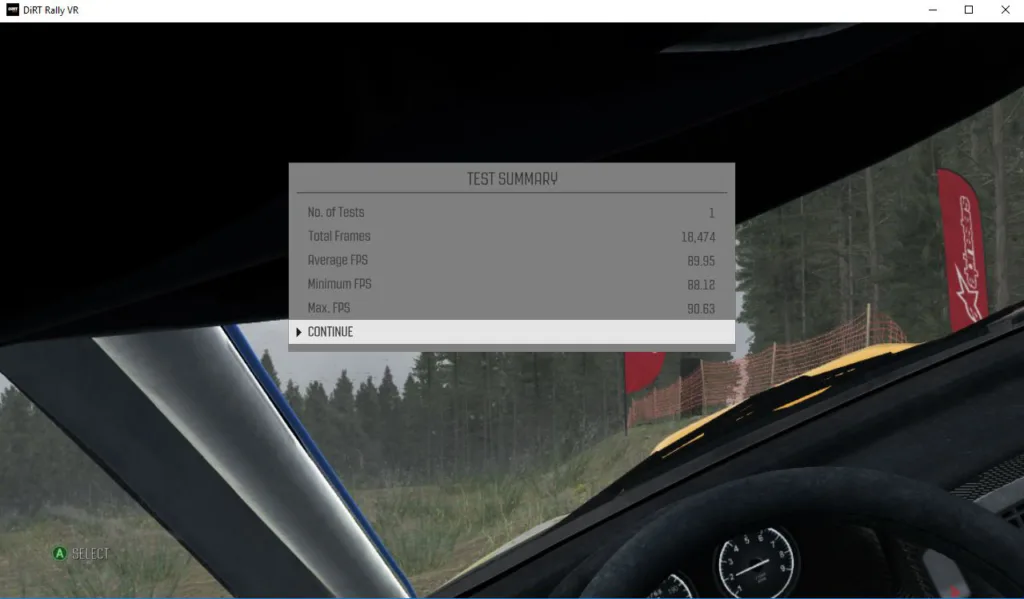 It’s also a very fun and demanding game for either PC gaming or for VR that requires the player to really learn the challenging road conditions. Best of all, DiRT: Rally has a lot of settings that can be customized although we benchmarked only the “Ultra” presets
It’s also a very fun and demanding game for either PC gaming or for VR that requires the player to really learn the challenging road conditions. Best of all, DiRT: Rally has a lot of settings that can be customized although we benchmarked only the “Ultra” presets
Here is the DiRT: Rally benchmark run by our 3 test cards at Ultra settings.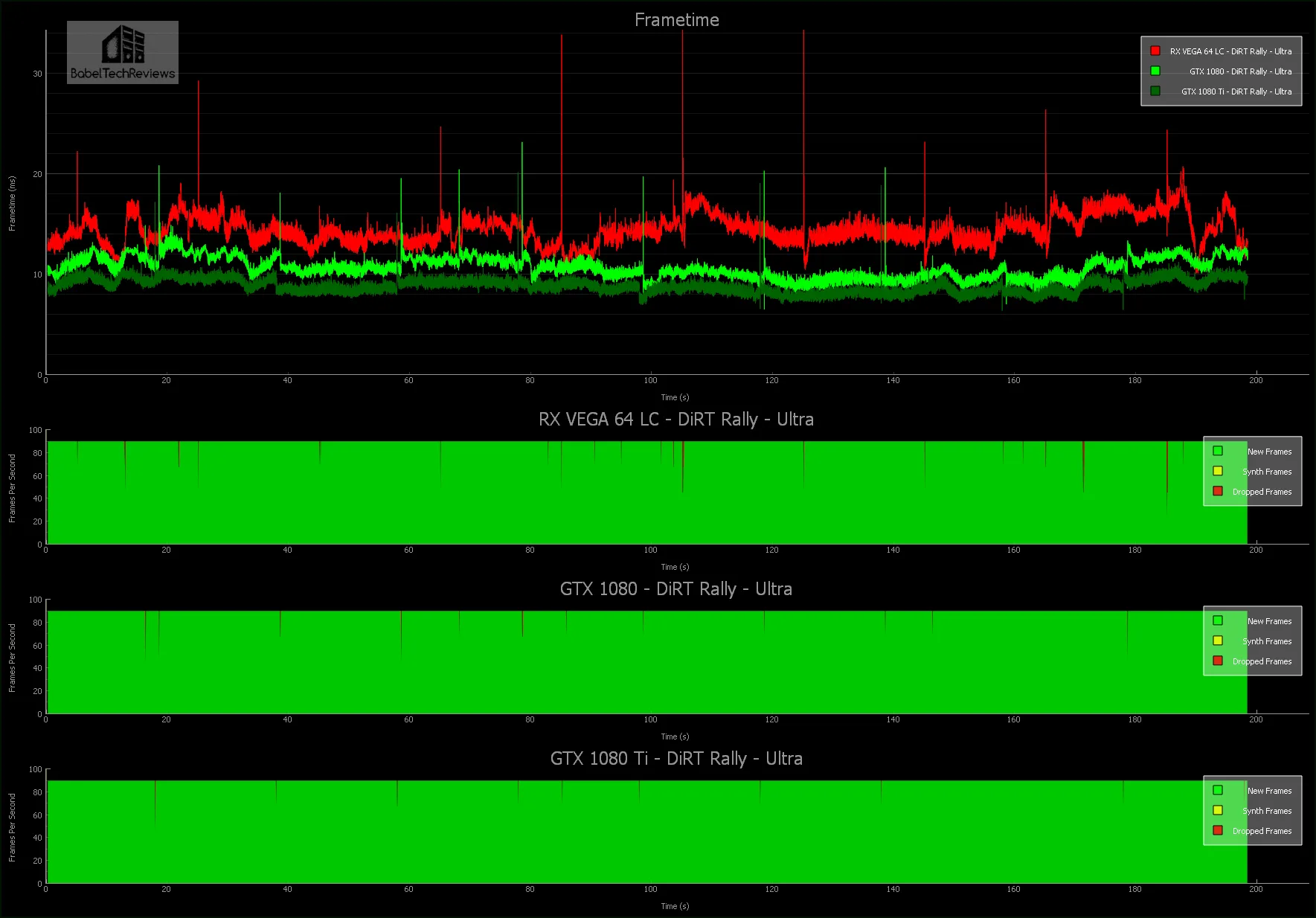
Although there isn’t any performance headroom with only 69.2 unconstrained FPS managed by the RX Vega 64, the GTX 1080 fares much better with 94.7 FPS while the GTX 1080 Ti averages a solid 114.4 FPS.
Let’s look at EVE: Valkyrie performance next.
EVE: Valkyrie
EVE Valkyrie is set in space and there is often a lot of empty space outside of fighting and exploration. Unfortunately, it is also hard to find a repeatable benchmark outside of the training experiences. You play as a cloned pilot who is resurrected and is now back to work fighting enemies. You get to experience barrel rolls, loops, and shooting in zero gravity. There is plenty of feedback from the Xbox controller but VR beginners need to beware because of the VR-induced stomach churning some of the maneuvers cause.
Although graphics are very good and recently improved by a large patch, all three cards can play EVE: Valkyrie on Ultra settings as shown by the frametime graph.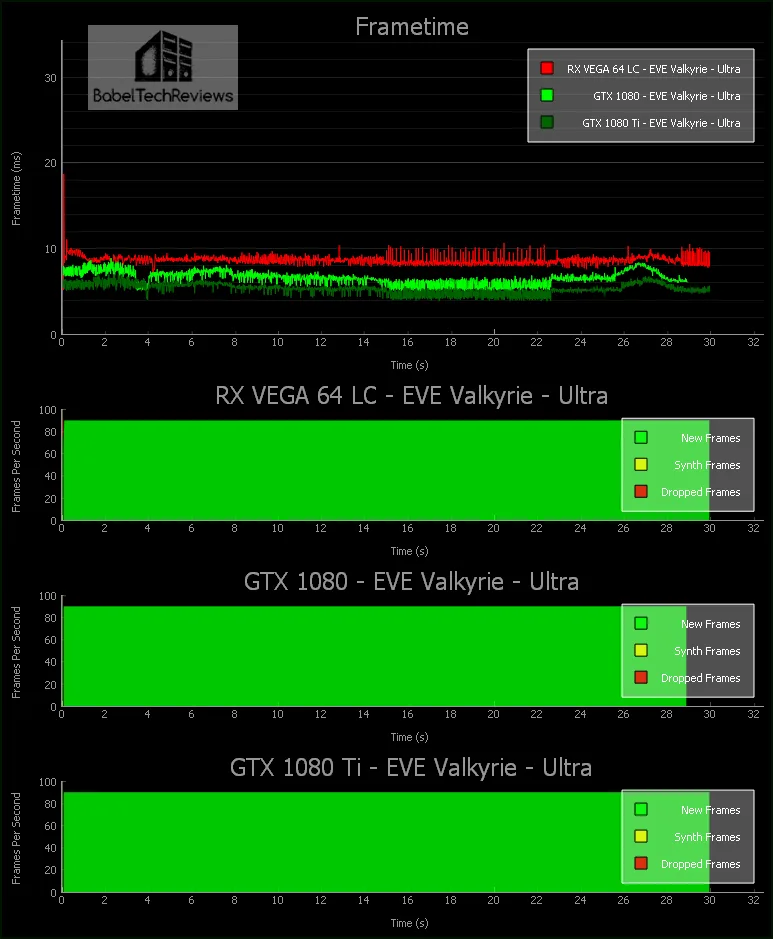 There is sufficient performance headroom with 115.8 unconstrained FPS managed by the RX Vega 64, although the GTX 1080 fares better with 155.3 FPS while the GTX 1080 Ti averages 188.6 FPS and can easily increase the Pixel Density for improved visuals.
There is sufficient performance headroom with 115.8 unconstrained FPS managed by the RX Vega 64, although the GTX 1080 fares better with 155.3 FPS while the GTX 1080 Ti averages 188.6 FPS and can easily increase the Pixel Density for improved visuals.
Let’s look at Obduction next.
Obduction
Obduction is an adventure video game developed by Cyan Worlds that is considered the spiritual successor to Myst and Riven. A player finds himself in a strangely familiar alien world that he must explore to return home, and there is a big emphasis on puzzle solving which gets more difficult as the player progresses. There are 4 main areas of the game which may take anywhere from 5 to 15 hours to complete.
The game may be played seated or standing and the comfort level is reasonable as locomotion is provided by either teleportation or by a smooth forward movement with snap turn options. Unfortunately, there are still issues with the way that Touch is implemented and it is often difficult to interact with objects which definitely can break immersion. It is also possible to play with a gamepad.
Let’s look at FCAT VR frametimes of Obduction running at Epic settings: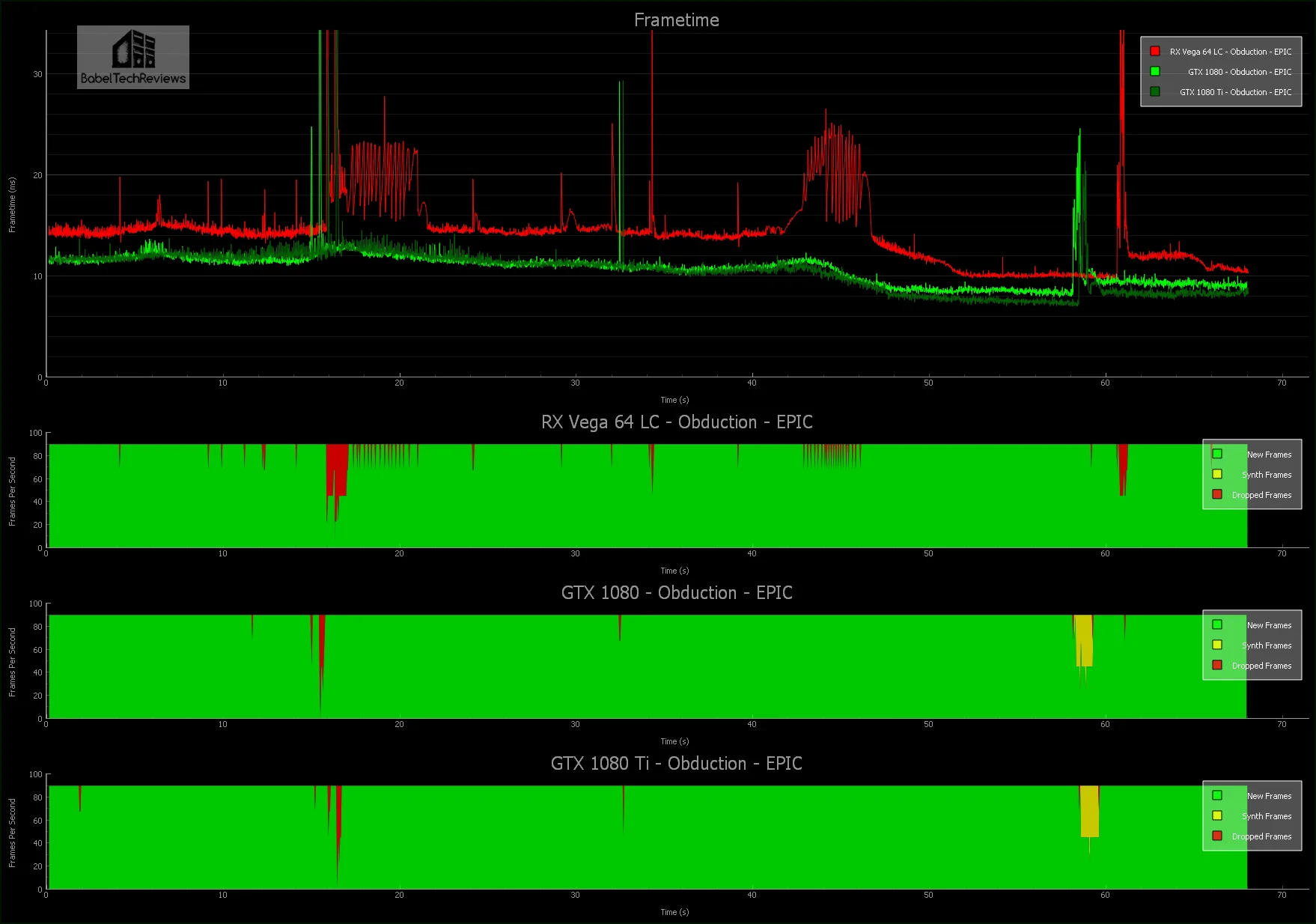
A GTX 1080 Ti is generally sufficient on Epic to deliver 96.4 unconstrained FPS, but there are occasional sudden dips and stutters with dropped frames, while the GTX 1080 still manages to deliver a similar experience to the GTX 1080 Ti – dropping frames also, but rarely going into reprojection at 93.8 unconstrained FPS. On the other hand, the RX Vega 64 can only manage 69.2 unconstrained FPS while dropping enough frames to make the player uncomfortable on Epic settings.
Let’s check out a CryTek game next, Robinson: The Journey, and then our final 3 games, Robo Recall, Serious Sam: The Last Hope, and The Unspoken.
Robinson: The Journey
 Robinson: The Journey is first person adventure/puzzle game developed by Crytek using the CryEngine. Just like with Crytek PC games, the visuals are among the very best to be found in any VR game. Crytek’s Robinson: The Journey is a blast to play in VR but it’s short and can be played in about 6 hours.
Robinson: The Journey is first person adventure/puzzle game developed by Crytek using the CryEngine. Just like with Crytek PC games, the visuals are among the very best to be found in any VR game. Crytek’s Robinson: The Journey is a blast to play in VR but it’s short and can be played in about 6 hours.
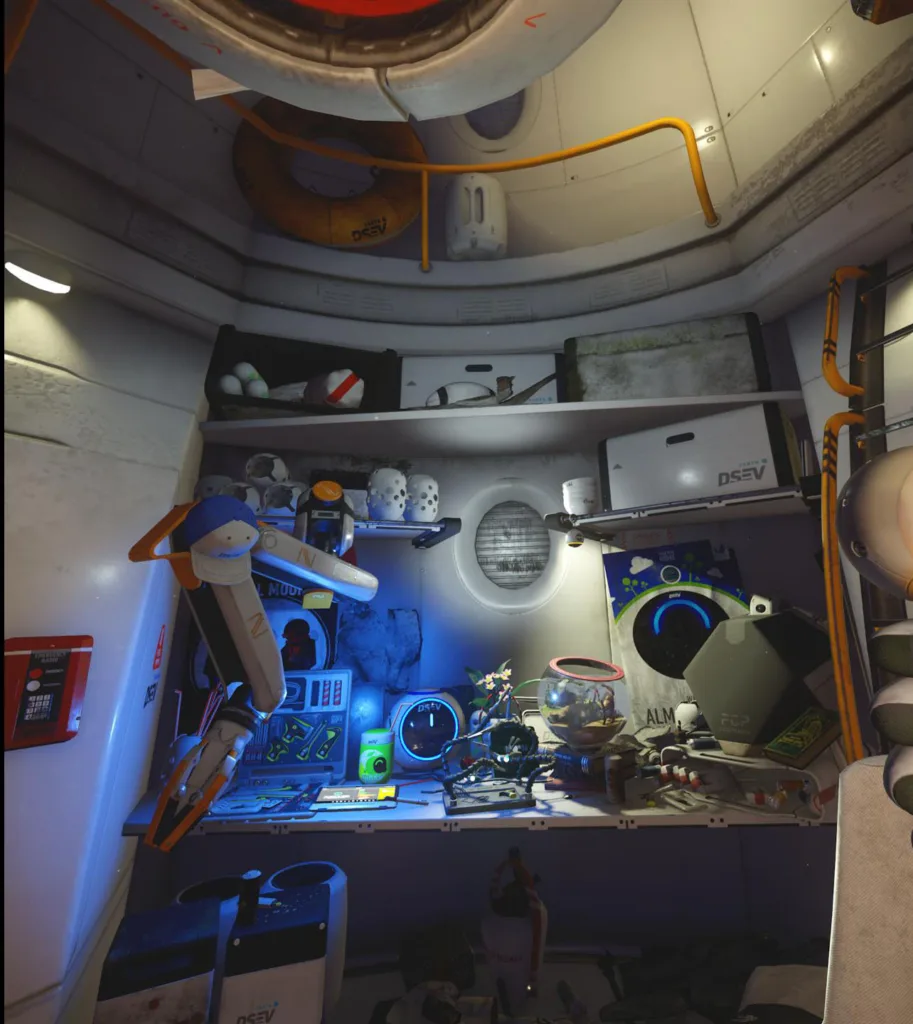
We benchmarked at the highest settings as below, but with the resolution scale set to 1.0x.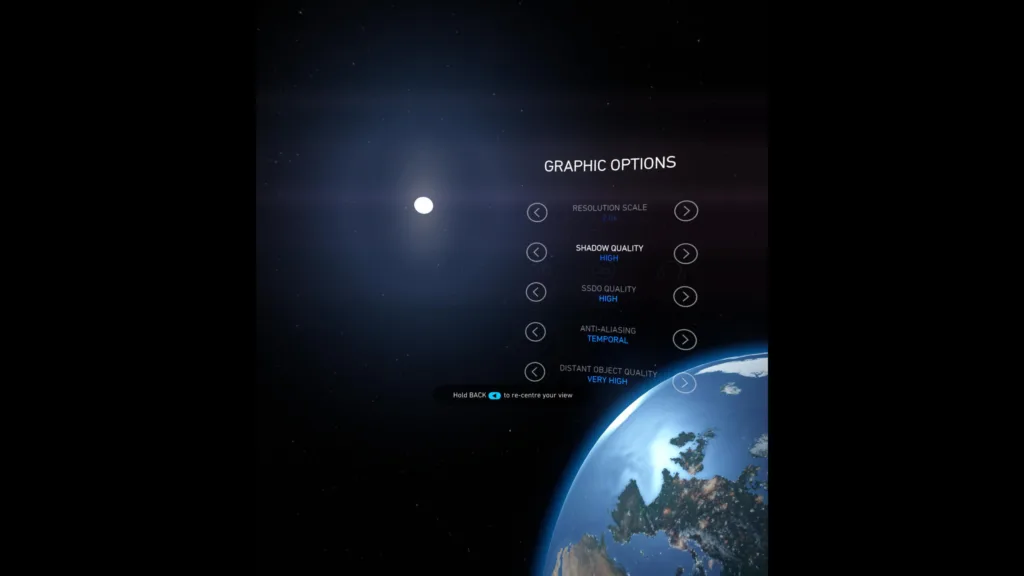
Here are the frametimes of our 3 competing video cards: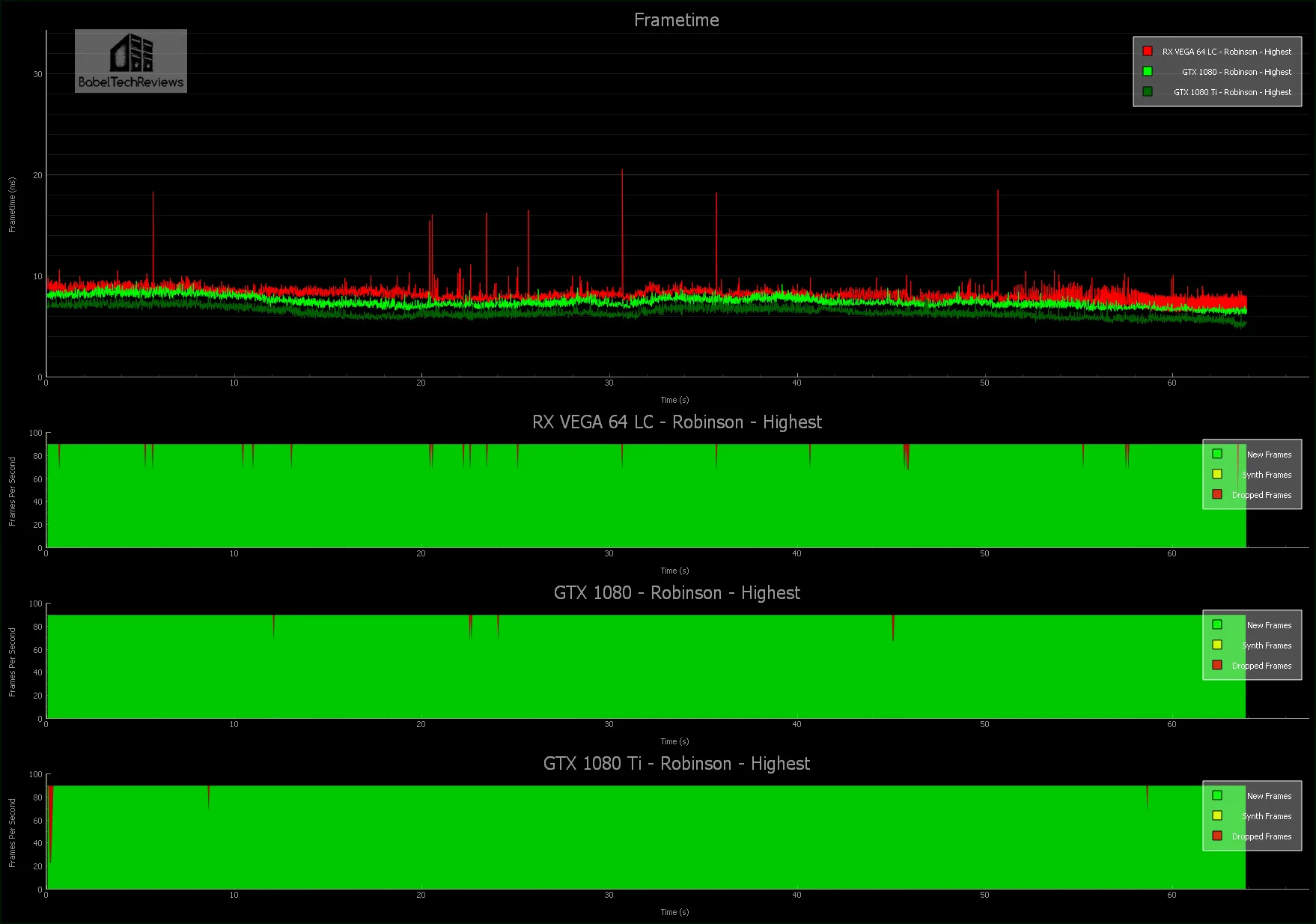
All three cards can increase the resolution scale or the pixel density to add to the immersion by sharpening up the visuals and decreasing the screendoor effect. The 1080 Ti easily averaged 155.3 unconstrained FPS while the GTX 1080 produced an average of 134.8 unconstrained FPS, and the RX Vega 64 averaged 120.6 unconstrained FPS.
Overall, Robinson: The Journey is a visually impressive game that appears well-optimized and it gives a satisfactory experience across our 3 cards at the highest settings. Let’s look at Robo Recall next.
Robo Recall
Robo Recall is a really fun game by Epic Games where you are given the task of “recalling” defective robots, and your method of dispatching them are varied and fun. Besides shooting them, you can swat enemy bullets back at the robots, and even tear them limb-from-limb and use their broken parts to beat other robots into parts. Robo Recall is a well-crafted game and the audio is excellent, plus the comfort level is outstanding. The only issue is that it is rather short. You can play through all nine missions in a few hours, and if you want to collect everything, you might put ten hours total into it.
Robo Recall has several settings and we picked the highest at 100% Pixel Density. MSAA is really helpful to sharpen the image, and high quality is noticeably better than low. Indirect Shadows are turned on as well as Planar Reflections which add to the immersion.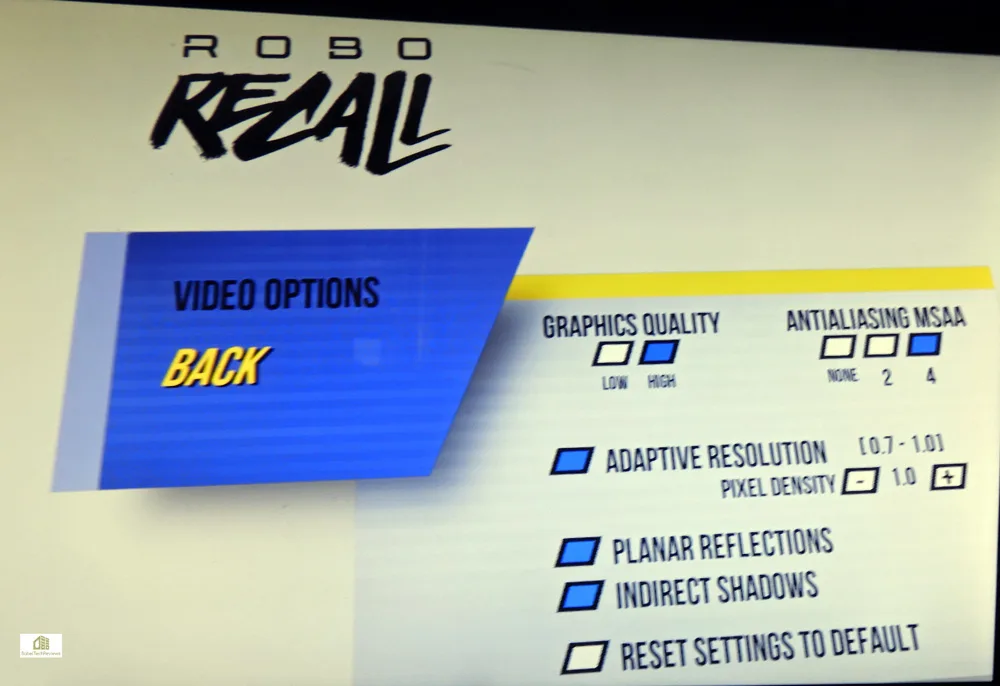
Here is the Robo Recall frametimes graph: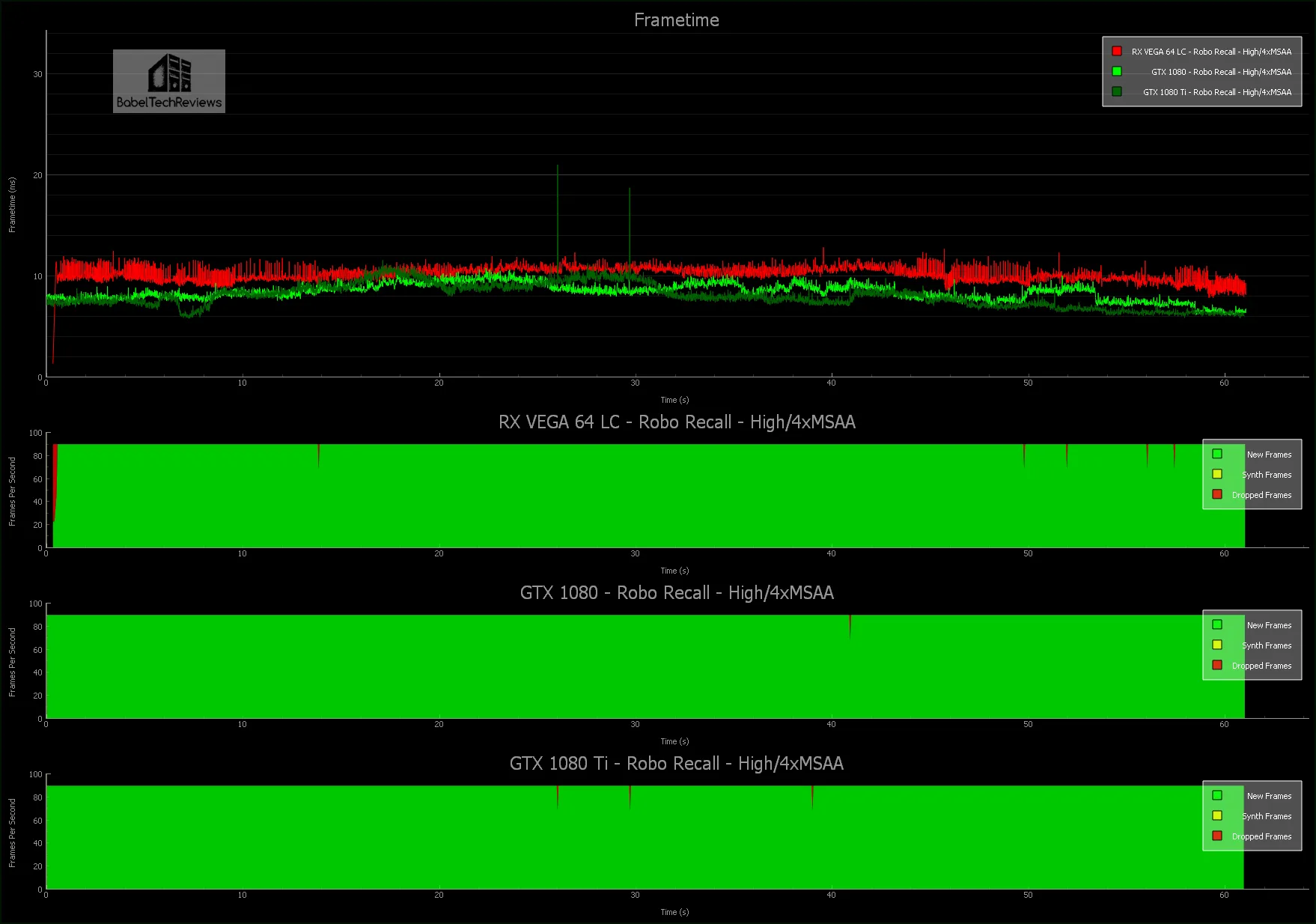
All of our cards do OK and do not go into any major reprojection – the GTX 1080 Ti manages 125.4 unconstrained FPS, the GTX 1080 averages 119.5 while the RX Vega 64 gets 98.7 FPS. Robo Recall comes highly recommended, and like the following game, Serious Sam: The Last Hope, there is a lot of dark humor.
Serious Sam: The Last Hope
Serious Sam The Last Hope is a lot of fun and is also very good for benching. There was a large patch released this Summer that completed the number of planets that were promised, and it appears to get more challenging as one continues to play.  Serious Sam: The Last Hope is a lot different from the Serious Sam PC games as VR places the player into a theater-like setting facing forward in a mostly fixed position while you are rushed by many waves of enemies from the front, left and right sides. Unlike the PC version, you have real 2-handed gunplay and can use vastly different strategies.
Serious Sam: The Last Hope is a lot different from the Serious Sam PC games as VR places the player into a theater-like setting facing forward in a mostly fixed position while you are rushed by many waves of enemies from the front, left and right sides. Unlike the PC version, you have real 2-handed gunplay and can use vastly different strategies.

There are a plethora of options that can be customized individually, but we picked default Ultra for the four basic performance settings.

Here are the graphs using all-Ultra settings: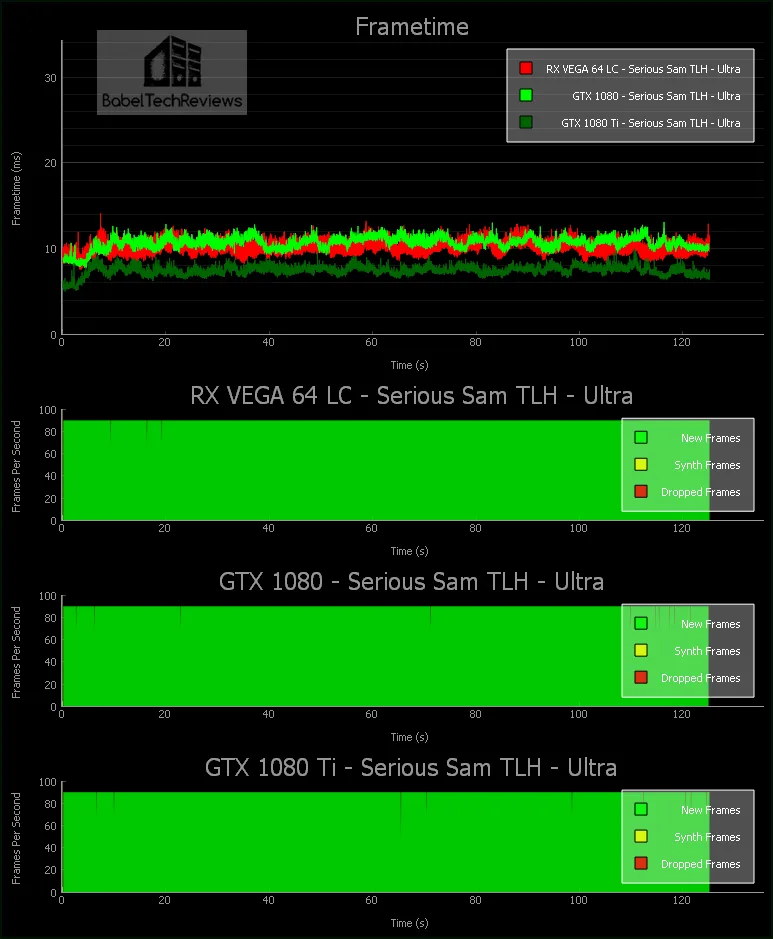
The GTX 1080 Ti with 135.7 FPS is again fastest by a large margin although the RX Vega 64 at 99.6 unconstrained FPS is slightly better than the GTX 1080 with 95.9 FPS. Let’s check our tenth and final game, The Unspoken.
The Unspoken
The Unspoken is basically a multiplayer urban magic fight club set in contemporary Chicago whose name is so secret, that it is unspoken. There is no single player mode although there is a backstory about the player being hunted for casting spells in public. It is a multiplayer game that makes the one of best and most intuitive uses of the Touch controllers that we have found to date. 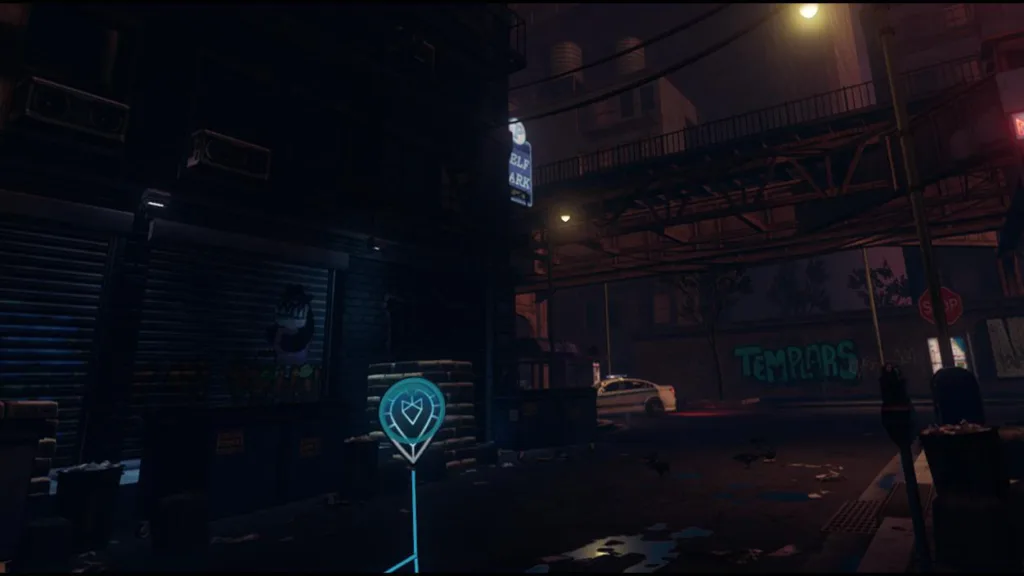
You must choose a wizard class and artifacts before you begin. Artifacts are powerful spells that can be used on occasion that require a more complex set of gestures than the usual attack or defense spell. The spells are simple and intuitive and the gesture motions are quite natural.
The Unspoken appears well-optimized and we picked the highest Ultra settings for our three cards.
 We performed our benchmark on the Midway Pier by casting one spell after another since playing a multiplayer match is anything but repeatable. We used the very highest settings and the frametime graph shows the comparative performance of all three cards. The dips and rises in the charts tend to match up with the more demanding special effects of each (skull) spell being cast.
We performed our benchmark on the Midway Pier by casting one spell after another since playing a multiplayer match is anything but repeatable. We used the very highest settings and the frametime graph shows the comparative performance of all three cards. The dips and rises in the charts tend to match up with the more demanding special effects of each (skull) spell being cast.

There is a real issue with the RX Vega 64 performance that is probably due to immature or broken drivers. In earlier testing, both the Fury X and the RX 580 had far better performance than the 47.8 unconstrained FPS of the RX Vega 64. The GTX 1080 Ti easily manages 151.5 unconstrained FPS and the GTX 1080 averages 127.3 unconstrained FPS.
Let’s head for our conclusion.
Unconstrained Framerate Chart Leaderboard
Here is the unconstrained FPS leaderboard summary for our 10 VR games which allows us to see how quickly the system could have displayed the frames if not for the fixed 90 Hz refresh cadence. The GTX 1080/Ti and the RX Vega 64 are benched on the latest drivers, while the other cards were benchmarked with the latest drivers of mid-Summer.

The above individual unconstrained FPS results are averaged over multiple benchmark runs and may not match up with each graph exactly although they are close. The cards are ranked in terms of average performance using ten VR game benchmarks, from lowest to highest, from left to right. Clearly the GTX 1080 Ti is the fastest video card for VR, and together with the GTX 1080, they are able to provide a premium VR experience. The RX Vega 64 and the GTX 1070 seem to provide a somewhat similar class of performance, and they are both more consistent than the Fury X which appears to be held back somewhat by its 4GB of vRAM.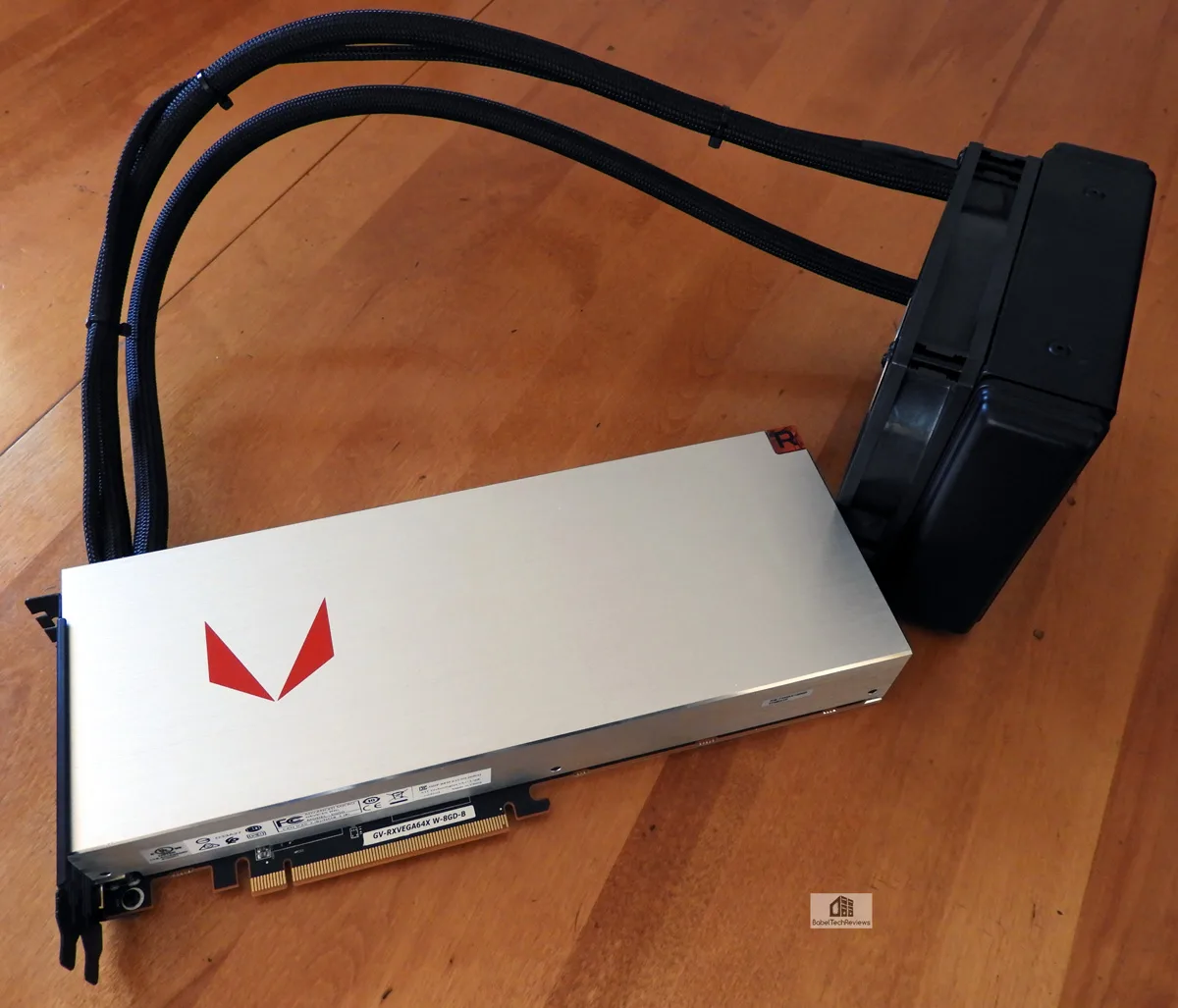
AMD has delivered on its promise for entry-level VR for the masses with the overclocked RX 480/RX 580 while the GTX 1060 is also a very good card in the same class. However, the $499-$699 RX Vega 64 will need some driver improvement before it’s VR performance can be called “premium” as its performance is quite inconsistent and it is in a class lower than that of the $499 GTX 1080. The GTX 1080 Ti is in the top VR class by itself.
We feel that it is important to understand and compare performance of VR games across competing video cards so as to make informed choices. It is important to get a judder-free VR experience as your health is literally at stake! VR sickness is quite unpleasant.
BTR plans to stay at the forefront of the VR “revolution” and we have added VR benching to all of our video card reviews in addition to reviewing and benchmarking the latest PC games. Next up, we will be overclocking the liquid cooled RX Vega 64 for a showdown with the overclocked GTX 1080 Founders Edition, and as soon as AMD releases a CrossFire-enabled driver, we’ll benchmark RX Vega 64 CrossFire against GTX 1080 SLI.
Stay tuned.
Happy Gaming!


